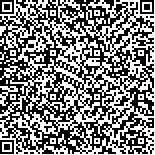| 引用本文: | 于现花,高海燕,金传山,刘军玲,林杰,王林.不同产地白芍标准煎液的指纹图谱及4种单萜苷类成分含量测定[J].中国现代应用药学,2020,37(11):1290-1295. |
| YU Xianhua,GAO Haiyan,JIN Chuanshan,LIU Junling,LIN Jie,WANG Lin.Fingerprint of Paeoniae Radix Alba Standard Decoction from Different Producing Areas and Determination of Four Monoterpenoid Glycosides Components[J].Chin J Mod Appl Pharm(中国现代应用药学),2020,37(11):1290-1295. |
|
| 本文已被:浏览 2595次 下载 1366次 |

码上扫一扫! |
|
|
| 不同产地白芍标准煎液的指纹图谱及4种单萜苷类成分含量测定 |
|
于现花1, 高海燕1, 金传山1,2,3, 刘军玲4, 林杰1, 王林1
|
|
1.安徽中医药大学药学院, 合肥 230012;2.中药饮片制造新技术安徽省重点实验室, 合肥 230012;3.中药复方安徽省重点实验室, 合肥 230012;4.安徽省食品药品检验所, 合肥 230051
|
|
| 摘要: |
| 目的 建立不同产地白芍饮片标准煎液的质量评价方法,以其分析不同产地白芍饮片的差异性。方法 根据标准煎液的制备要求,制备15批不同产地的白芍饮片标准煎液,采用HPLC建立指纹图谱,同时测定氧化芍药苷、芍药内酯苷、芍药苷、苯甲酰芍药苷成分含量以及转移率、标准煎液出膏率,并以标准煎液的含量测定结果对所有样品进行方差分析。结果 15批不同产地白芍标准煎液的出膏率范围为15.39%~27.81%,平均出膏率为23.15%,标准偏差为4.44%;氧化芍药苷含量范围为0.015%~0.046%,转移率为70.04%~129.26%;芍药内酯苷含量范围为0.315%~1.150%,转移率为70.77%~119.80%;芍药苷含量范围为1.857%~2.522%,转移率为67.84%~99.16%;苯甲酰芍药苷含量范围为0.051%~0.172%,转移率为56.11%~88.00%;指纹图谱包含共有峰14个,标定4个,相似度>0.97。结论 不同产地白芍饮片和标准煎液的成分基本一致,白芍标准煎液中芍药苷、苯甲酰芍药苷无差异,氧化芍药苷、芍药内酯苷有差异。 |
| 关键词: 白芍 氧化芍药苷 芍药内酯苷 芍药苷 苯甲酰芍药苷 标准煎液 指纹图谱 含量 |
| DOI:10.13748/j.cnki.issn1007-7693.2020.11.002 |
| 分类号:R284.1 |
| 基金项目:国家重点研发计划项目(2017YFC1701600) |
|
| Fingerprint of Paeoniae Radix Alba Standard Decoction from Different Producing Areas and Determination of Four Monoterpenoid Glycosides Components |
|
YU Xianhua1, GAO Haiyan1, JIN Chuanshan1,2,3, LIU Junling4, LIN Jie1, WANG Lin1
|
|
1.School of Pharmacy, Anhui University of Traditional Chinese Medicine, Hefei 230012, China;2.Anhui Provincial Key Laboratory of New Technologies for Manufacturing Chinese Herbal Pieces, Hefei 230012, China;3.Key Laboratory of Traditional Chinese Medicine Compound in Anhui Province, Hefei 230012, China;4.Anhui Institute for Food and Drug Control, Hefei 230051, China
|
| Abstract: |
| OBJECTIVE To establish a quality evaluation method for standard decoctions of Paeoniae Radix Alba from different producing areas, and to analyze the differences of Paeoniae Radix Alba decoction pieces from different producing areas. METHODS According to the preparation requirements of standard decoctions, 15 batches of standard decoctions of Paeoniae Radix Alba from different producing areas were prepared. HPLC was used to establish fingerprint. Meanwhile, the contents of oxypaeoniflorin, albiflorin, paeoniflorin and benzoyl paeoniflorin as well as the transfer rate and the extraction rate of standard decoctions were determined. Variance analysis was carried out on all samples based on the content determination results of standard decoctions. RESULTS The extraction rate of 15 batches of Paeoniae Radix Alba standard decoctions from different producing areas ranged from 15.39% to 27.81%, the average extraction rate was 23.15%, and the standard deviation was 4.44%. The content range of oxypaeoniflorin was 0.015%-0.046%, and the transfer rate was 70.04%-129.26%. The content range of albiflorin was 0.315%-1.150%, and the transfer rate was 70.77%-119.80%. The content range of paeoniflorin was 1.857%-2.522%, and the transfer rate was 67.84%-99.16%. The content range of benzoyl paeoniflorin was 0.051%-0.172%, and the transfer rate was 56.11%-88.00%. The fingerprint included 14 peaks and 4 calibrations, and the similarity was >0.97. CONCLUSION The components of Paeoniae Radix Alba and standard decoctions from different producing areas are basically the same. Paeoniflorin and benzoylpaeoniflorin in standard decoctions of Paeoniae Radix Alba have no difference, while oxypaeoniflorin and albiflorin have difference. |
| Key words: Paeoniae Radix Alba oxypaeoniflorin albiflorin paeoniflorin benzoyl paeoniflorin standard decoction fingerprints content |
